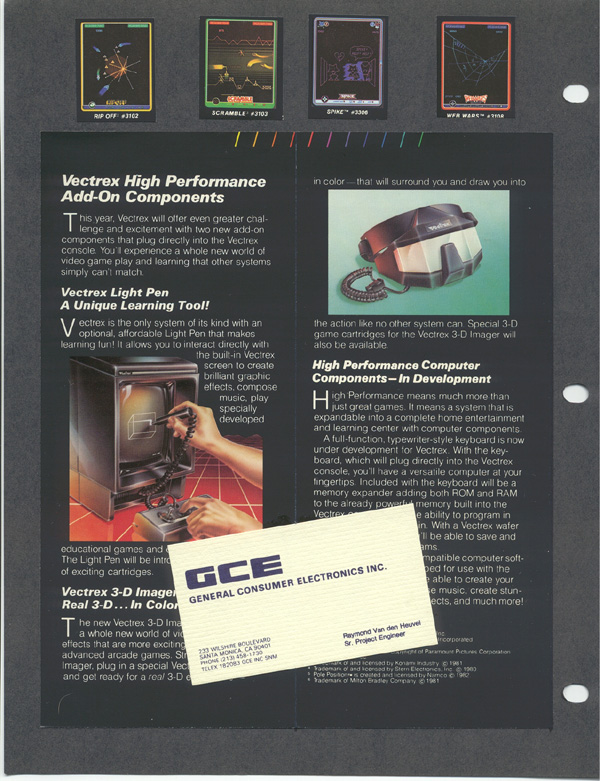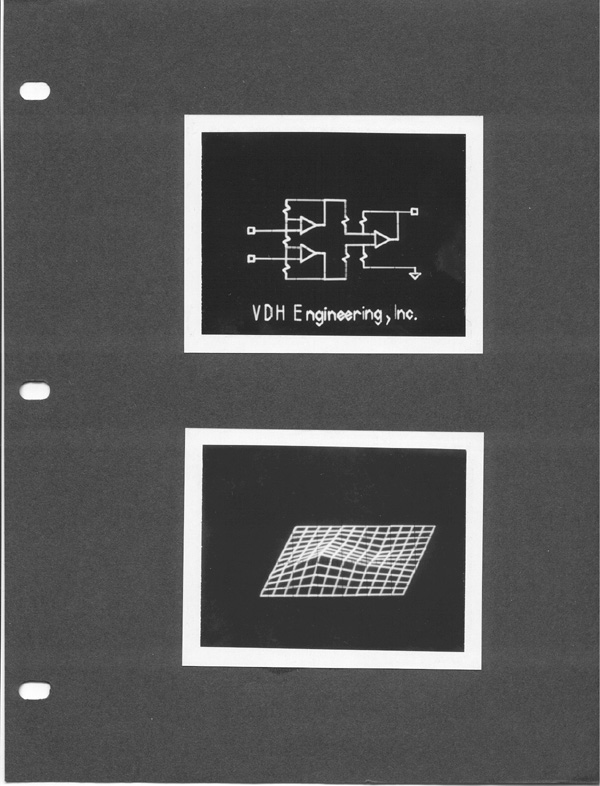
 000110
000110
The Chinese technicians had trouble with the English language. But we
soon developed a common understanding based on head ("yes" and "no")
and hand signals, punctuation marks ("?") and, most of all, schematic
diagrams. Travelers beware: "yes" in Chinese does not always mean
"yes". It can also mean "I hear you and I am thinking about what you
said."
The Vectrex™ used integrating vector generator circuits. They were
subject to drift and I offered to use my drift-free "homebrew"
interpolating vector generator circuits. I also was disappointed with
video arcade games -- a waste of good technology -- and proposed that
the Vectrex™ be provided with software for biofeedback and
psychological studies as requested by a therapist. On my own, at home,
I designed and built circuits and software for alpha wave biofeedback.
